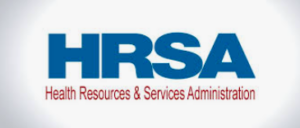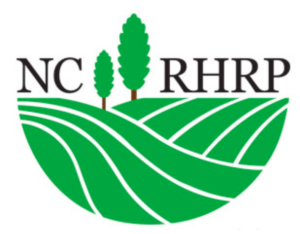- CMS: Medicare Program; Implementation of Prior Authorization for Select Services for the Wasteful and Inappropriate Services Reduction (WISeR) Model
- Public Inspection: CMS: Medicare Program: Implementation of Prior Authorization for Select Services for the Wasteful and Inappropriate Services Reduction Model
- CMS: Secretarial Comments on the CBE's (Battelle Memorial Institute) 2024 Activities: Report to Congress and the Secretary of the Department of Health and Human Services
- HHS: Patient Protection and Affordable Care Act: Marketplace Integrity and Affordability
- HRSA Announces Action to Lower Out-of-Pocket Costs for Life-Saving Medications at Health Centers Nationwide
- Public Inspection: HHS: Patient Protection and Affordable Care Act: Marketplace Integrity and Affordability
- Increased Risk of Cyber Threats Against Healthcare and Public Health Sector
- Eight Hospitals Selected for First Cohort of Rural Hospital Stabilization Program
- Announcing the 2030 Census Disclosure Avoidance Research Program
- CMS: Medicare Program; Hospital Inpatient Prospective Payment Systems for Acute Care Hospitals and the Long-Term Care Hospital Prospective Payment System and Policy Changes and Fiscal Year 2026 Rates; Requirements for Quality Programs; and Other Policy Changes; Correction
- CMS: Medicare Program; Hospital Inpatient Prospective Payment Systems for Acute Care Hospitals and the Long-Term Care Hospital Prospective Payment System and Policy Changes and Fiscal Year 2026 Rates; Requirements for Quality Programs; and Other Policy Changes; Correction
- CMS: Medicare and Medicaid Programs; Contract Year 2026 Policy and Technical Changes to the Medicare Advantage Program, Medicare Prescription Drug Benefit Program, Medicare Cost Plan Program, and Programs of All-Inclusive Care for the Elderly; Correction
- CMS: Medicare and Medicaid Programs; Contract Year 2026 Policy and Technical Changes to the Medicare Advantage Program, Medicare Prescription Drug Benefit Program, Medicare Cost Plan Program, and Programs of All-Inclusive Care for the Elderly; Correction
- CMS: Medicare Program; Prospective Payment System and Consolidated Billing for Skilled Nursing Facilities; Updates to the Quality Reporting Program for Federal Fiscal Year 2026
- CMS: Medicare Program; FY 2026 Hospice Wage Index and Payment Rate Update and Hospice Quality Reporting Program Requirements
HHS Releases Nondiscrimination in Health Program and Activities Final Rule

Effective May 6. The U.S. Department of Health and Human Services (HHS) Office of Civil Rights issued a final rule under Section 1557 of the Affordable Care Act advancing protections against discrimination in health care. At a minimum, the rule will restore protections against discrimination on the basis of race, color, national origin, sex, age, and disability. It will also reduce language access barriers, expand physical and digital accessibility, and address bias in health technology. With the restoration of the rule, HHS aims to increase meaningful access to health care for communities across the United States.
Navigating the Application Guide for HRSA Rural Healthcare Provider Transition Project

-Apply by August 15. Five small rural hospitals and certified Rural Health Clinics will be selected to receive one year of focused, virtual technical assistance designed to strengthen their organization’s understanding of the key elements of value-based care. Project focus areas include quality, efficiency, patient experience, and safety. Details on the application process can be found in the 2024-2025 Application Interview and Process Guide. Selected applicants will be notified in September, and project activities begin in October 2024.
Using the Updated Financial Distress Index to Describe Relative Risk of Hospital Financial Distress

Researchers at the North Carolina Rural Health Research and Policy Analysis used a recent revision of the Financial Distress Index (FDI) model to describe the relative risk of experiencing financial distress for rural hospitals and selected urban hospitals. Among the findings: over 60 percent of hospitals at highest relative risk of financial distress are in seven states: Texas, Oklahoma, Tennessee, Alabama, Kansas, Mississippi, and Georgia.
Research Demonstrates Non-Urgent Use of Emergency Departments by Rural and Urban Adults
 Among findings from the Maine Rural Health Research Center: rural adults aged 18-64 are more likely than their urban counterparts to visit the emergency department in a given year; socio-demographics associated with higher rates of non-urgent ED use by rural residents include younger age, fair or poor mental and physical health, low income, public insurance coverage, and lower access to primary care.
Among findings from the Maine Rural Health Research Center: rural adults aged 18-64 are more likely than their urban counterparts to visit the emergency department in a given year; socio-demographics associated with higher rates of non-urgent ED use by rural residents include younger age, fair or poor mental and physical health, low income, public insurance coverage, and lower access to primary care.
New Data from the CDC Released on Preventable Premature Death

New Data from the CDC on Preventable Premature Death. The new study from the Centers for Disease Control and Prevention (CDC) is an extension of an earlier CDC study, which showed a higher percentage of early death from the five leading causes in rural counties compared with urban counties during 2010-2017. More recent data show that the rural-urban gap in all-cause mortality continues to widen. In 1999, the death rate in rural areas was 7 percent higher than in urban areas; by 2019, it was 20 percent higher. View CDC’s rural health website and Rural Public Health At-a-Glance to find out what CDC is doing to improve the health and well-being of rural communities.
Volunteer Opportunities Open for 2024 Pop-Up Dental Clinics in Pennsylvania
Looking to volunteer at a dental event in 2024? The PA Coalition for Oral Health compiled a list of pop-up clinics happening across the state. Click on the locations/dates for more information on each clinic. Looking to make a difference year-round? Free clinics rely on volunteers to provide quality, accessible healthcare in their communities. The Free Clinic Association of Pennsylvania can connect you with clinics in your region.
Click here for more info on volunteering with free clinics that see patients year-round.
Remote Area Medical (RAM) Clinics
Sharon, PA – June 8 & 9
Scranton, PA – August 3 & 4
Philadelphia, PA – August 24 & 25
Erie, PA – September 7 & 8
Allentown, PA – October 19 & 20
MOM-n-PA
Reading, PA – June 21 & 22
Mission of Mercy Pittsburgh
Pittsburgh, PA – November 1 & 2
PA’s Insurance Marketplace Issues RFP for Enrollment Assister Contract

Pennie, Pennsylvania’s official health insurance marketplace, has issued a Request for Proposal for Assister Services. The awardee will collaboratively drive statewide activities to increase awareness of the financial help and health coverage available through Pennie, and work directly with community organizations to provide local, in-person enrollment assistance.
The primary goals of this project are to:
- Increase awareness of affordable and high-quality coverage available through Pennie
- Expand the availability of direct, in-person enrollment assistance across Pennsylvania
- Diversify Pennie’s local partners across the Commonwealth so that assister services can be provided in a way that meets unique, local needs
- Increase outreach to historically marginalized communities who are disproportionately uninsured or underinsured.
“Pennie hears every day from people looking for more support to find health coverage that works for their medical needs and their household budget. This new contract will provide enrollment assistance and education through local and trusted partners in communities across the Commonwealth,” noted Pennie’s Executive Director Devon Trolley. “Knowing that ‘word of mouth’ is consistently how most Pennsylvanians learn of Pennie, we are excited to be expanding our network and partnerships to ensure Pennie is woven into the community fabric, and that free expert help is never too far from home.”
Contract Details
The initial term of this contract is four years, including two optional two-year renewals. The Lead Contractor on the project will coordinate and subcontract with five to eight regional organizations across the Commonwealth. These regional offices will be responsible with the bulk of the day-to-day outreach, education, and enrollment assistance while consistently broadening their network of community-based organizations.
Submission and Deadline
Organizations interested in becoming the Lead Contractor can visit, https://www.emarketplace.state.pa.us/Solicitations.aspx?SID=PHIEA%2023-21. All proposals must be submitted by 1 pm on June 27.
For inquiries concerning the RFP specifically, please contact Gwen Zeh, Issuing Officer, at RA-PWPENNIEProcuremt@pa.gov.
Other Opportunities
The new assister services approach will rely on partnering with established regional organizations across Pennsylvania. Pennie is actively seeking information about community partners looking to support enrollment assistance and outreach efforts. For organizations that are interested in supporting Pennie’s efforts but are not interested in becoming the Lead Contractor, visit this link to provide Pennie with your information and level of interest: https://pennie.com/partnerships/.
About Pennie
Pennie® is the official health insurance marketplace for the Commonwealth of Pennsylvania, and the only source of financial help to lower the cost of high-quality private health insurance plans. Pennsylvanians without access to other health coverage can find affordable health plans through Pennie that meet different needs and budgets. Eligibility for financial help is based on income, family size, and other factors. Pennie is operated by the Pennsylvania Health Insurance Exchange Authority, established under state law. For more information, visit pennie.com or follow us on social at fb.com/PenniePA and Twitter.com/PennieOfficial.
New Rules Will Help Adults and Children Enroll — and Stay Enrolled in — Medicaid and CHIP

On April 2, the Centers for Medicare and Medicaid Services (CMS) published the most significant set of eligibility regulations since the initial rule implementing the Affordable Care Act (ACA). The new rule will help eligible individuals enroll in Medicaid and Children’s Health Insurance Program (CHIP) coverage and stay enrolled as long as they remain eligible. Many of the provisions address issues that contributed to coverage losses during the unwinding of the continuous enrollment provision that has resulted in at least 13.7 million people losing Medicaid coverage, mostly for procedural reasons.
The new rule is effective 60 days after publication, but because most of the new regulatory requirements will necessitate significant policy, operational, and system changes, CMS has set a three-year pathway for states to come into compliance. This approach attempts to balance the competing needs of making the streamlined processes available as soon as possible and responding to states’ capacity issues.
Key changes that address Medicaid unwinding specifically include:
- Updating address information. States took different steps during the unwinding process to update addresses and respond to returned mail. Certain actions, like relying on updated address information from managed care plans and the United States Postal Service (USPS), were permitted only under temporary authority. The final rule codifies many of these best practices and outlines actions states must take to respond to returned mail and use address information from reliable data sources, such as the USPS. States must come into compliance by December 2025.
- Timelines for responding to requests for information. During the unwinding period, some beneficiaries lost their coverage because they did not respond to requests for information in a timely manner. The final rule allows more time for beneficiaries to respond to such requests. For example, individuals will have at least 15 days to respond to requests at the time of application and 30 days to respond to requests when they report a change in circumstances. A 30-day minimum period already exists at renewal. States must come into compliance with these changes by June 2027.
- Transitions between Medicaid and CHIP. Children can lose coverage or have gaps in coverage when transitioning between Medicaid and CHIP programs. For example, if a child is enrolled in Medicaid and family income increases, he or she may be no longer eligible for Medicaid but eligible for CHIP. In this case, the child would still need to go through a CHIP eligibility determination. The new rule requires each agency to accept determinations of eligibility made by the other agency at both application and renewals, ensuring that children no longer “bounce” between state-run programs. States must come into compliance with these changes by June 2024.
Other key changes in the new regulations include:
- Aligning eligibility and enrollment processes across Medicaid eligibility groups. The final rule extends streamlined, modernized processes that are already required for children, pregnant people, parents, and adults eligible under the ACA Medicaid expansion to people who are older and disabled. For example, under the new rules, individuals who seek coverage based on disability status or age (i.e., 65 or older) must be able to submit applications in person, online, by telephone, or by mail and have their eligibility determined without an in-person interview. Renewals cannot be more frequent than every 12 months, states must first attempt to renew coverage by reviewing data sources rather than requesting documentation, and individuals must have a minimum time period to respond to renewal forms. These changes will significantly ease the administrative burden on individuals who are older or disabled. These populations are more likely to live on fixed incomes and be financially eligible for coverage but disproportionately challenged with meeting enrollment and renewal requirements. States must implement these changes by June 2027.
- Removing CHIP coverage barriers. The final rule eliminates the ability of states to lock out children who are behind in premiums for a set time period (e.g., 30 or 60 days). It also eliminates waiting periods before children can enroll and annual and lifetime benefit limits for CHIP-enrolled children. States are also no longer permitted to require payment of past-due premiums as a condition of reenrollment. Fourteen states currently lock CHIP-enrolled children out of coverage for a period for failure to pay premiums. Nine states have waiting periods, a practice dating back to the early days of CHIP to address concerns that CHIP might “crowd out” or “substitute” coverage under group health plans. Thirteen states currently impose annual or lifetime limits on CHIP benefits, most applied to dental and orthodontia services. States must implement these changes to CHIP by June 2025.
While some states have already implemented many of these policies under temporary authority granted by CMS during the unwinding period, all states will need to evaluate the policy, operational, and systems changes needed to comply with the new rule. Given the issues arising during the unwinding period, states will be developing corrective action plans following the unwinding period. The phased timing of the provisions in the new rule will allow states to combine these efforts, bringing their systems into compliance with both the new and the preexisting rules. Notably, the implementation of many of these changes will qualify for enhanced federal administrative matching funds, helping defray the cost of implementation for states. Once implemented, the changes should result in a more streamlined, efficient, and customer-focused process to determine eligibility, enroll, and renew Medicaid and CHIP coverage.
2024 NHSC New Site Application Opens Soon
Do you know that becoming a National Health Service Corps (NHSC) approved site can help your recruitment and retention goals? You can:
- Inform clinicians of your NHSC-approved status, so they can apply for one of the NHSC Loan Repayment Programs.
- Post a position on the Health Workforce Connector and search job seeker profiles.
- Participate in Virtual Job Fairs, online job fairs that connect you with job-seeking primary care trainees and practicing clinicians.
- Hire an NHSC scholar or an NHSC Students to Service participant.
Eligible healthcare facilities provide outpatient, primary health care services to people in Health Professional Shortage Areas. Sites must contact their State Primary Care Office when applying for or inquiring about a HPSA designation.
Interested in learning more? Click here to check eligibility!
Young Adults and Former Foster Care Children Need Your Help Obtaining Coverage

Every year, around 20,000 young people transition out of foster care. The primary source of health coverage for this population is Medicaid, and since continuity of health coverage is crucial, continue reading for helpful information you can use when working with Former Foster Care Children (FFCC).
Changes to the Former Foster Care Children Medicaid Policy
Under federal law, Medicaid provides coverage for qualifying youth who age out of foster care until they reach age 26, under the mandatory FFCC eligibility group.
Until recently, to be considered eligible for the FFCC eligibility category, individuals had to meet all of the following criteria:
- Are under age 26;
- Are not eligible for or enrolled in another mandatory eligibility group;
- Were in foster care in the state in which the individual is seeking Medicaid eligibility upon attaining age 18 (or higher as the state has elected in its title IV-E plan); and
- Were enrolled in Medicaid in such state while in foster care.
However, updates to these criteria, effective January 2, 2023, expand the ability for FFCC to obtain Medicaid coverage. Individuals now must have been in foster care in any state upon attaining age 18 (or higher as the state has elected in its title IV-E plan) as well as have been enrolled in Medicaid in any state while in such foster care.
View a CMS resource with more information about these updates here.
